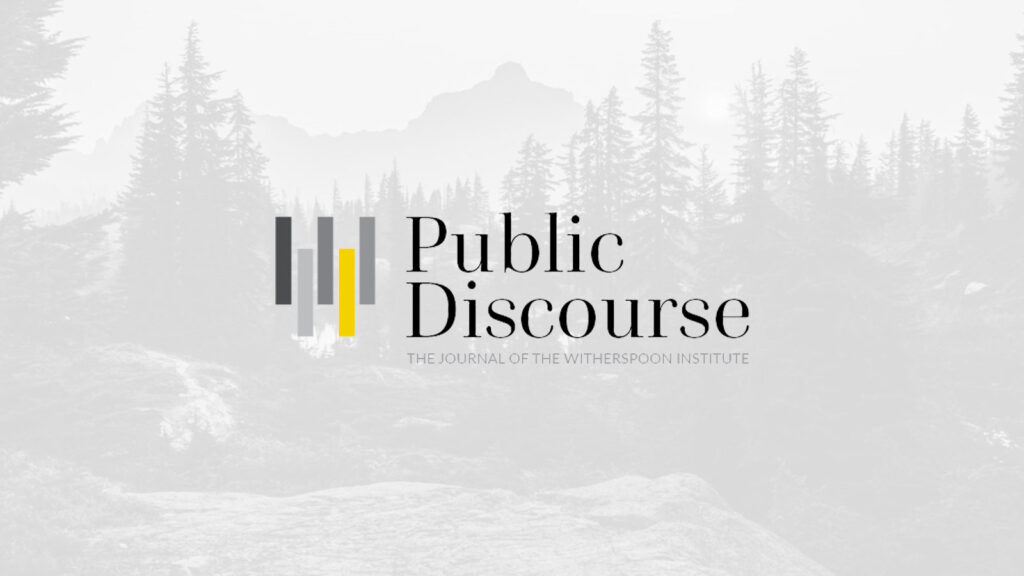The application of the HHS contraception mandate to religious employers has reignited the debate about the definition of religion, a debate that courts generally have been reluctant to resolve. This time around, multiple circuit courts have addressed the issue as it applies to for-profit organizations such as Hobby Lobby. Some courts have decided that corporate forms can exercise religion under the Religious Freedom Restoration Act (RFRA) and the Free Exercise Clause. Yet the Third Circuit recently ruled, somewhat oddly, that constitutional free exercise rights do not extend to business forms.
The courts are struggling to determine which entities are entitled to protection under the Free Exercise Clause. The Obama administration has routinely taken the position that the term “religious” implies inward, private belief. Consequently, organizations that operate in the public sphere of the marketplace would be, by definition, less religious than those that confine themselves to private activities. This definition of religion weakens, if not ultimately destroys, a claim for exemption from the regulation.
Viewing religion in this way understandably ruffles the feathers of religious believers, who consider evangelization, service, and “living the Gospel” (or its non-Christian parallel) essential to religious experience. For believers, “religious” often connotes just the opposite of the administration’s emphasis on private belief: it includes proclaiming the good news publicly, whether that happens through working for Catholic Charities or by engaging in business on Etsy.
Scholarly attention has not been lacking on this topic. Many scholars have acknowledged that the Supreme Court’s decision in Hosanna-Tabor v. EEOC, which upheld the principle that the Free Exercise Clause provides a ministerial exception (or organizational autonomy “right”) for religious organizations from anti-discrimination statutes, represents the current Court’s general sympathy for religious claimants. Others speculate that the Court will view the HHS mandate skeptically (for other reasons) should it decide to hear lawsuits against it.
Start your day with Public Discourse
Sign up and get our daily essays sent straight to your inbox.Few legal scholars, however, have used the Hosanna-Tabor decision in their defense of employer exemptions from the mandate. This must be remedied: drawing on the Court’s broad understanding of who can exercise religion and have ministers in Hosanna-Tabor, legal scholars should argue for a wide-ranging interpretation of the Free Exercise Clause that would exempt both religious and corporate organizations from the mandate.
Judicial Difficulty Defining Religion
Historically speaking, the Supreme Court has been reluctant to define religion. Its precedents are rife with ambiguity: theism no longer appears essential, and philosophical traditions that resemble religious belief are sufficient for protection under the Free Exercise Clause. The most famous cases—involving exemption from the draft statute—allow belief systems inspired by social science disciplines to qualify as religious. Conversely, the Court seemed to distinguish religion as special in the heyday of strict scrutiny in cases such as Thomas v. Review Board. Nevertheless, reliance on the “ultimate concern” line of cases, which equated “religious” with basically any belief held as strongly as the traditional or orthodox belief in theism, would seem to blur the line between religious and secular organizations, thereby making the task of courts even more difficult.
The circuit courts have not been any better. The Third Circuit and the Ninth Circuit, respectively, have created balancing tests consisting of decision-making by way of analogy. These tests were created in an attempt to explicate the meaning of §702 of Title VII. Each test identifies multiple factors considered relevant to the question of defining whether an organization should be considered religious. These factors include non-profit status, self-identification as religious, activity that is consistent with a stated mission, and external activities that are normally associated with religious expression. While providing litigants some guidelines for their day in court, these approaches place significant discretion in the hands of courts that have confessed general incompetence in this matter. In short, the circuits are split, and the issue is not going away.
Religious Organizations Need a Legal Definition
Is this definitional ambiguity really a problem? The slew of cases brought against the HHS mandate answer that question with a resounding yes. But even if the mandate were not at issue, the scope of the ministerial objection would still be in doubt. Especially given the recent rise of unconventional organizations affiliated with some aspect of religion, the legal definition of a religious organization needs to be established.
Fortunately, there is ample precedent supporting church autonomy. Organizational autonomy promotes individual and associational rights, while allowing institutions to assist the government in its work of fashioning a good and virtuous citizenry. These concepts predate the American Constitution and even existed in states with established religions. Early Americans promoted church autonomy, though they did not define what constitutes a church or religious society—just like our current Supreme Court.
The last fifty years have seen the proliferation of organizations that profess elements of a religion. It has become common for small businesses, sole proprietors, and corporations to contain religious components at an institutional level. At the beginning of this millennium, some estimates counted roughly 30,000 evangelical Christian parachurch organizations with total budgets in the billions. The line between such entities and secular social organizations—not to mention well-established civic groups—is less than clear. And the current crop of case law at the circuit level and from the Supreme Court is inadequate. Enter the majority’s broad strokes in Hosanna-Tabor.
The Elephant in the Hosanna-Tabor Opinion
The majority opinion in Hosanna-Tabor was short on details. The Court admitted that it had not completely explained the nature of the ministerial exemption, and many commentators immediately recognized that the opinion was incomplete and vague.
Yet one of the Court’s loudest statements was one that it did not formally make. The decision rested on a huge and unarticulated assumption: that Hosanna-Tabor Evangelical Lutheran Church and School was the type of institution eligible to invoke the ministerial exception in the first place. The Court never asked whether the organization claiming the ministerial exception was capable of having ministers. Instead, the Court assumed that the school could; the inquiry focused entirely on whether the individual in question was indeed a minister.
Significantly, the opinion uses the terms “religious organization,” “church,” and “religious group” interchangeably. Even Chief Justice Roberts’s historical discussion blurs the lines. The ambiguity could not be more apparent in this key passage:
We agree that there is such a ministerial exception. The members of a religious group put their faith in the hands of their ministers. Requiring a church to accept or retain an unwanted minister … intrudes upon more than a mere employment decision…. By imposing an unwanted minister, the state infringes the Free Exercise Clause, which protects a religious group‘s right to shape its own faith and mission through its appointments.
This passage, coupled with the third phrase, “religious organization,” suggests that the majority of the Court’s Justices might have a broad view of what types of entities deserve First Amendment protections. Why else would these different terms be used?
A Workable Legal Framework
The history of the First Amendment indicates a strong preference for institutional religious autonomy. Religion remains special in the eyes of the law. This tradition of respect and deference must guide any legal framework that purports to determine whether an organization qualifies as religious under the Free Exercise Clause. Hence, the Court should consider placing a presumption of religiousness at the forefront of any test, finding its support in the divergent opinions among the founding fathers, the prevalence of unconventional religious experience throughout American history, and current precedent, which admits that religion is special—even if it is difficult to define. Such a presumption comports with the Court’s inclusive language in Hosanna-Tabor.
However, this presumption cannot be the end of the analysis. Left unchecked, it could conflict with Employment Division v. Smith because an organization’s self-characterization as religious is not entirely internal. Rather, self-defining as religious mirrors proclaiming an act sacramental in the sense that both are outward acts. Chief Justice Roberts recognized this very issue in Hosanna-Tabor. Therefore, parties challenging an organization’s qualifications could be afforded an opportunity to prove the absence of religiousness, but the burden of proof would rest with the party wishing to dispute religiousness.
Although analogical reasoning is imperfect, courts could determine religiousness based on similarities to what already has been deemed religious in cases with little dispute. This analysis could be tempered by reasonableness, in a fashion similar to the reasonable observer test that still reigns in some aspects of Establishment Clause jurisprudence.
In other words, would a reasonable observer consider the organization to be religiously motivated in its practices? Deference to religious experience plus a reasonableness inquiry allows for crafting a usable legal definition. If the reasonable observer would recognize a religious motivation, a link between belief and the organization’s primary practices, and the capacity to have ministers forging that link, then the presumption is not overcome and the institution is entitled to protection under the Free Exercise Clause.
This two-step process, coupled with a final determination of sincerity consistent with already existing doctrine, completes the framework. Probing sincerity would prevent this framework from running afoul of Smith’s concern about organizations becoming laws unto themselves. It also would seem to allow the vast majority of organizations that self-identify as religious to receive protection. Businesses such as Hobby Lobby would receive the protection they deserve because the reasonable observer cannot clearly distinguish the sole proprietor who acts from religious motivation and the artificial business form that does as well. Both are sincerely motivated by religion, contain missions that infuse and inform daily business practices, and contain individuals who consider their employment to be a form of witness and religious activity. In short, presumptive deference plus reasonableness will provide significant latitude for protecting religious organizations.
Admittedly, this framework is imperfect, but that will always be the case given the diversity and developing nature of religious experience and the limitations of language and the law. Still, it is workable, accords with the country’s tradition of erring on the side of religion, and allows courts to do their jobs without punting. It avoids bright-line rules that might exclude unconventional religious bodies, such as businesses. Most importantly, it preserves the balance between religious freedom and the need for courts to articulate answers to constitutional questions.













